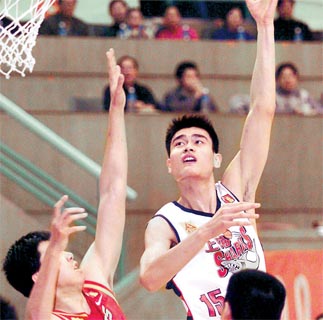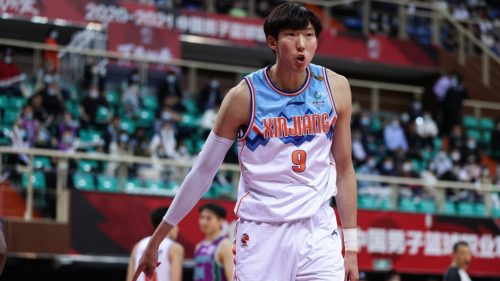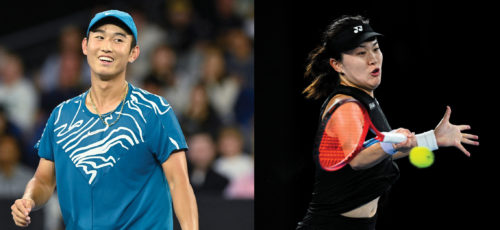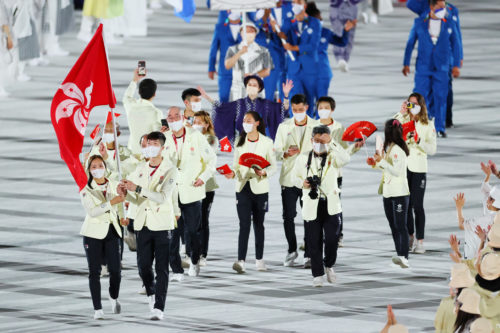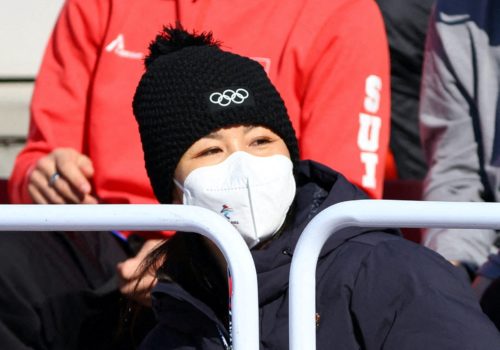China’s sports industry 10 years after the Beijing Olympics: Global leader or pretender?

The China Sports Column is a The China Project weekly feature in which China Sports Insider Mark Dreyer looks at the week that was in the China sports world.
With the 2008 Olympics kicking off 10 years ago this week, much has already been written on how China has changed as a country in the ensuing decade. But while the Olympics were much, much more to China than simply a sporting event, they were still — at its core — exactly that.
While I also remember some of the external distractions, such as whether or not the internet was being blocked or the farcical 77 applications for official protests — of which 74 were miraculously withdrawn after the issues were “resolved,” two were suspended for being “incomplete” and one was denied for illegally involving children — my own personal memories are still primarily sporting ones.
OK folks, what are your memories of the #2008Olympics? Good or bad, post them here. I'll start… Sitting next to @SteveRedgrave5 & Adrian Chiles during the men's 100m, 4 rows from the track by the finish line. Remember when Bolt celebrates early? HE'S LOOKING AT ME!! #10YearsAgo pic.twitter.com/M4veYdxF0a
— Mark Dreyer (@DreyerChina) August 8, 2018
I sat trackside as Usain Bolt destroyed the 100-meter world record, despite easing up well before the line. I watched Michael Phelps complete an incredible — yet somehow inevitable — march to eight Olympic titles, despite ostensibly being beaten by Milorad Cavic in perhaps the greatest race of all time. I witnessed Hungary defeat the United States to win its third straight Olympic title in men’s water polo in a thrilling, and typically bruising, encounter. And, as a Brit, I felt more than a little pride in the Bird’s Nest stadium during the Closing Ceremony when that iconic red London bus, topped by David Beckham and Jimmy Page, conveyed the sort of personable charm that Beijing’s stage-managed extravaganza never quite achieved.
But then what?
China didn’t exactly enter a sporting wilderness after 2008, but there was certainly a dip. Hurdler Liu Xiang 刘翔 never really recovered from his tearful exit at the Bird’s Nest and probably should have retired long before he finally did so in 2015. Yao Ming 姚明, meanwhile, had carried the Chinese flag into the Bird’s Nest at the Opening Ceremony before nailing a three-pointer to open the scoring during China’s game against the U.S. (the hottest ticket in town); but Yao effectively only played one more season in the NBA before injuries forced his retirement.
Around the same time, the Chinese Super League saw players, referees, and officials arrested in a massive match-fixing scandal that set the league back by years.
But it wasn’t all doom and gloom. Li Na’s 李娜 stunning win at the 2011 French Open couldn’t have come at a better time to restore some national sporting pride, as she beat four Top 10 players, including Maria Sharapova, en route to a straight-sets win in the final. By following that up with the Australian Open title in 2014 — and this endearing victory speech — Li has arguably changed the face of global tennis, even though we might not see the results of that for another few years.
However, the most significant sporting moment in the past decade was also one of the least interesting.
In October 2014, the Chinese government released a policy document — now simply referred to as “Number 46” — that outlined China’s plan to create the biggest sports industry in the world, with the target of five trillion RMB ($729 billion) in annual revenue by 2025.
It is this document more than anything else that has ultimately been responsible for much of the sports industry’s growth since then, from Chinese investment into European football clubs and eye-watering wages being offered in the Chinese Super League (CSL) to the rise of fitness trends such as running and exercise clubs. I’d even go as far as to say it secured the 2022 Winter Olympics for China, as Beijing edged out Almaty by 44 votes to 40 in a decision that was announced in July 2015. With a seemingly relentless quest to develop sports of all kinds already underway, enough IOC members were convinced that Beijing could still stage a successful Winter Games despite being almost entirely devoid of snow.
But, as with almost everything in China, the path of progress has not been without some bumps in the road.
The CSL has moved on from the dark days of the match-fixing era, but the bubble in overseas football investment has already started to deflate, and with the league losing Belgian World Cup star Axel Witsel and — potentially — French international Anthony Modeste this week alone, it looks like the overspending domestically could also be at an end.
Broadcast rights for sports took a massive hike on the back of No. 46’s stated intentions, with upstart LeSports leading the way — but that didn’t last long. Suning’s PPTV has picked up some of the slack, but a renegotiated lower deal for CSL rights has forced a little more realism on the market. Another new Chinese player on the scene, DDMC, stunned the global football industry this summer by underwriting an eight-year deal for rights to the Asian Football Confederation’s tournaments worth more than $4 billion. It’s too soon to make a judgement on that particular valuation, but no one would be surprised if that, too, goes south.
Sponsorship is another large part of any sports industry, and while it was encouraging to see seven Chinese companies jump on the FIFA World Cup bandwagon, the industry as a whole has stagnated. Here are some of the sponsors from the 2008 Olympics: Air China, Bank of China, CNPC, China Mobile, State Grid, Sinopec. Now here are some of the names that have signed up to sponsor the 2022 Olympics: Air China, Bank of China, CNPC, China Unicom, Sinopec.
It’s to be expected, of course, that China mobilizes its state-owned enterprises for the sake of national glory, but in the absence of more dynamic names, don’t expect these companies to do much in the way of activation, i.e., actually leveraging that Olympic sponsorship for any other purpose, sporting or otherwise. China Unicom might stick the five rings on its mobile top-up cards, but that’s about it.
I came to China specifically for the Olympics, and never intended to stay much beyond, but 11 years later, Beijing is still home. It’s been personally fascinating to see the sports industry go through two boom cycles and, overall, the sports industry is in a far healthier position than when I first arrived.
Primarily, sports is now an official part of the wider economy, but the headlines perhaps overstate its importance among China’s myriad priorities. Yes, it has a seat at the table, but it sometimes feels less like the top table than the proverbial Table 19 at your cousin’s wedding.
For all the issues, though, China is still essential for the global sports industry. Yao Ming and, to a lesser extent, Li Na have changed the framework of their respective sports. Just imagine what could happen if China ever produces a true soccer star.
China is still the central driver for growth for all the big sports brands and it’s where leagues, teams, and even individual players are focused for their next initiatives. But the hardest thing can be to quantify it all.
Consider, for a moment, the ludicrous number of unchecked figures that swirl around the sports industry here. Who truly believes that 120 million Chinese will become regular skiers? Or that 240 million people watched the World Cup final on the unknown Migu Sports app? And don’t get me started on the semantics of the word “fan,” of which Manchester United apparently have more than 100 million here, while another 33 million Chinese rugby “fans” are claimed by the sport’s governing body. Those numbers and many more besides are all #FakeStats, to paraphrase a certain somebody, but you see them repeated regularly in print.
However, the biggest number of them all — five trillion RMB — has remained unchanged since the target was announced four years ago. I’ve spoken to plenty of people who think that this should be well within China’s reach, but if anyone thinks they can accurately tally up what exactly constitutes the sports industry here, please get in touch.
China’s sports industry is, in some ways, a microcosm of the country’s economy — simultaneously saving the world while perched on the edge of the precipice. The potential of the sports market continues to generate excitement, both in China and globally, and the next decade will surely bring more dramatic changes to the industry — if it doesn’t get consumed by its own hype first.
The China Sports Column runs every Friday on The China Project. Follow Mark Dreyer @DreyerChina
